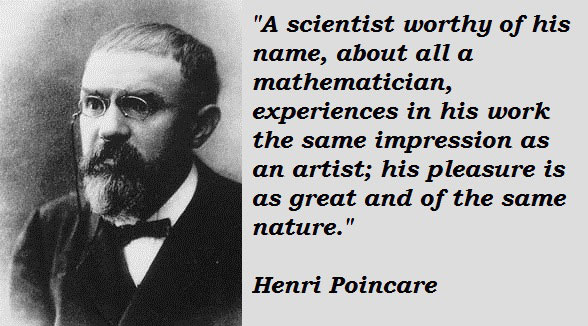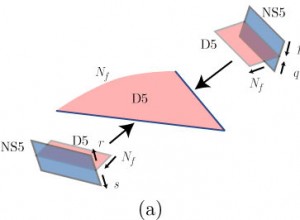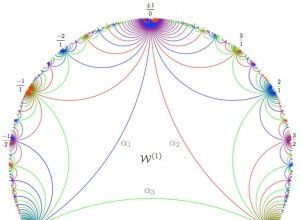Well, a big question is how did the universe begin. And we, cannot answer that question. Some people think that the big bang is an explanation of how the universe began, IT IS NOT. The big bang is a theory of how the universe evolved from a split second after whatever brought it into existence. And the reason why we’ve been unable to look right back at time zero, to figure out how it really began; is that conflict between Einstein’s ideas of gravity and the laws of quantum physics. So, STRING THEORY may and will be able to – it hasn’t yet; we’re working on it today – feverishly. It may be able to answer the question, how did the universe begin. And I don’t know how it’ll affect your everyday life, but to me, if we really had a sense of how the universe really began, I think that would, really, alert us to our place in the cosmos in a DEEP way. ~ Brian Greene!
I listed the 4 essential properties of D3-branes, namely: i) the propagation of a D3-brane through spacetime generates a 4-dimensional worldvolume that has 4-dimensional Poincaré invariance, ii) the string worldsheet generating the graviton via quantum fluctuation can be topologically compactified on the boundary of its corresponding ![]() space, iii) D3-branes have constant axion and dilaton fields, and for the purposes of this post, iv) D3-branes are self-dual. Thus, the gravitonic D3-brane action with a super-Lagrangian coupling can be derived as
space, iii) D3-branes have constant axion and dilaton fields, and for the purposes of this post, iv) D3-branes are self-dual. Thus, the gravitonic D3-brane action with a super-Lagrangian coupling can be derived as
![Rendered by QuickLaTeX.com \[{S_{D3}} = \frac{1}{{4{k^2}{C_{\left[ 4 \right]}}}}\int {\sqrt {\widetilde {{k_{\mu \nu }}^{ - 2\Phi }}} } \left( {2{k^{\mu \nu }}{C_{\left[ 2 \right]}} + \frac{\lambda }{8} + {{\not \partial }_\mu }\Phi \,\partial _\phi ^\mu \Phi - C_{\left[ 4 \right]}^\Phi - 1{K_{\mu \nu }}^{ * \dagger }} \right){L_{G(D3)}}\]](https://www.georgeshiber.com/wp-content/ql-cache/quicklatex.com-4cbaad7459411ee8621d70b435ebd99e_l3.png)
with
![]()
However, as I showed, one must exhibit the self-duality of the D3-brane in the Hamiltonian setting. It is my aim in this post to provide the proof. One can always lift an ![]() duality to an
duality to an ![]() duality by introducing the D3-brane dilaton
duality by introducing the D3-brane dilaton ![]() and axion
and axion ![]() which are constant background fields. Then, one can re-define an
which are constant background fields. Then, one can re-define an ![]() duality Lagrangian as such:
duality Lagrangian as such:
![]()
with ![]() . From the above
. From the above ![]() dual Lagrangian, the D3-brane Hamiltonian action can be derived as
dual Lagrangian, the D3-brane Hamiltonian action can be derived as
![]()
where
![Rendered by QuickLaTeX.com \[\left\{ {\begin{array}{*{20}{c}}{{L^{DBI}} = - \sqrt { - {\rm{det}}\left( {{G_{\mu \nu }} + {F_{\mu \nu }}} \right)} }\\{{G_{\mu \nu }} = \prod _\mu ^M{\prod _\mu }M}\\{{F_{\mu \nu }} = {{\not \partial }_{\left[ {\mu A\nu } \right]}} + \Omega _{\mu \nu }^3}\\{\Omega _{\mu \nu }^i = {{\widetilde {\theta {{\not \prod }_{{{\left[ {\mu {\tau _j}{{\not \partial }_\nu }} \right]}^\theta }}}}}^{ * \dagger }}}\end{array}} \right.\]](https://www.georgeshiber.com/wp-content/ql-cache/quicklatex.com-1257b174cc18d25d5fb07b8555d6e03c_l3.png)
![]() and
and ![]() are the Pauli matrices cohomologically acting on the supersymmetric group indices, and
are the Pauli matrices cohomologically acting on the supersymmetric group indices, and ![]() is the Wess-Zumino Lagrangian satisfying the Matsubara condition, and is given by
is the Wess-Zumino Lagrangian satisfying the Matsubara condition, and is given by
![Rendered by QuickLaTeX.com \[\left\{ {\begin{array}{*{20}{c}}{{L^{WZ}} = {C^{(2)}}{F_{\mu \nu }} + C(4)}\\{{C^{(2)}} = \widetilde \theta {{\not \prod }^{ * \dagger }}{\tau _i}\,d\theta = {\Omega _1}}\\{{C^{(4)}} = \Xi \,\; - \frac{1}{2}{\Omega _1}\,{\Omega _3}}\end{array}} \right.\]](https://www.georgeshiber.com/wp-content/ql-cache/quicklatex.com-d9aa515ea63450cb99afb526df1b5f33_l3.png)
where ![]() and
and ![]() are RR-2 and RR-4 differential forms, and
are RR-2 and RR-4 differential forms, and ![]() represents the Kappa symmetry of the gauge bundle of the D3-brane’s
represents the Kappa symmetry of the gauge bundle of the D3-brane’s ![]() topology. Now, let
topology. Now, let
![Rendered by QuickLaTeX.com \[\left\{ {\begin{array}{*{20}{c}}{\left( {{X^M},{P^M}} \right)}\\{\left( {\theta ,\,{\pi _\theta }} \right)}\\{\left( {{A_\mu },{E^\mu }} \right)}\end{array}} \right.\]](https://www.georgeshiber.com/wp-content/ql-cache/quicklatex.com-8ace3f50e2d533f7b52c602e7e0da2e0_l3.png)
be a canonical conjugate set for the super-Kahler phase space variables, and define the critical 3-dimensional anti-symmetric tensor
![]()
and introduce the de Rham variables
![Rendered by QuickLaTeX.com \[\left\{ {\begin{array}{*{20}{c}}{{{\not B}^i} = \frac{1}{2}{\varepsilon ^{ijk}}{F_{ik}} = {e^{ - \Phi /2}}{B^i} + \frac{1}{2}{\varepsilon ^{ijk}}\Omega _{jk}^3}\\{{B^i} = \frac{1}{2}{\varepsilon ^{ijk}}{F_{ij}}\;;\,\;\left( {i,j,k = 1,2,3} \right)}\\{{{\not P}_M} \equiv \frac{{\partial {L^{DBI}}}}{{\partial \prod _0^M}} = P_M^{ * \dagger } - {e^{\phi /2}}{{\left( {E + \chi B} \right)}^i} \cdot \frac{{\partial {F_{0i}}(\prod ,\widetilde \theta )}}{{\partial \prod _0^M}} - \frac{{\partial {L^{WZ}}\left( {\prod ,F,\widetilde \theta } \right)}}{{\partial \prod _0^M}}}\\{{{\not \Sigma }^i} \equiv \frac{{\partial {L^{DBI}}}}{{\partial {F_{0i}}}} = {e^{\phi /2}}{{\left( {E + \chi B} \right)}^i} - \frac{{\partial {L^{WZ}}\left( {\prod ,F,\widetilde \theta } \right)}}{{\partial {F_{0i}}}}}\end{array}} \right.\]](https://www.georgeshiber.com/wp-content/ql-cache/quicklatex.com-7bed07df37b6bce226440d5c6599d160_l3.png)
where ![]() transforms as
transforms as
![]()
One then finds that the constraints of the system to be given by
– ![]() symmetry constraint
symmetry constraint
– ![]()
– ![]()
and
– the p + 1 diffeomorphism constraints
![]()
and
– the fermionic constraints
![Rendered by QuickLaTeX.com \[\begin{array}{c}\psi \equiv {\pi _0} - {{\not P}_M}\frac{{\not \partial \prod _o^M}}{{\not \partial \widetilde \theta }} - {e^{\phi /2}}{\left( {E + \chi \not B} \right)^i}\frac{{\not \partial {F_{0i}}\left( {\prod ,\widetilde \theta } \right)}}{{\not \partial \widetilde \theta }}\\ - \frac{{\not \partial {L^{WZ}}\left( {\prod ,F,\widetilde \theta } \right)}}{{\not \partial \widetilde \theta }}\end{array}\]](https://www.georgeshiber.com/wp-content/ql-cache/quicklatex.com-f125e717eb5b8f5447ac415aaf962561_l3.png)
with ![]() being the spatial part of the
being the spatial part of the ![]() metric, and its determinant being
metric, and its determinant being ![]() . One must now show the Poincaré invariance of the bosonic constraints
. One must now show the Poincaré invariance of the bosonic constraints
![]()
and the supersymmetric covariance of the fermionic constraint ![]() under the
under the ![]() transformation of
transformation of ![]() and
and ![]() corresponding to the
corresponding to the ![]() fermionic field rotation holds. Then one gets
fermionic field rotation holds. Then one gets
![]()
and
![Rendered by QuickLaTeX.com \[{\left( {{\Omega ^l}} \right)^i} \equiv {\varepsilon ^{ijk}}\widetilde \theta \not \prod _i^{ * \dagger }{\tau _l}\,\not \partial \theta \]](https://www.georgeshiber.com/wp-content/ql-cache/quicklatex.com-cb96dd7bb4b0eb50cbb2317c28ddf501_l3.png)
with ![]() being an
being an ![]() matrix satisfying
matrix satisfying
![]()
and transforms as
![]()
with
![]()
and
![]()
and ![]() being an
being an ![]() transformation satisfying
transformation satisfying
![]()
and
![]()
with ![]() rotation
rotation ![]() .
.
To prove D3-brane self-duality, we must consider
![Rendered by QuickLaTeX.com \[\begin{array}{c}{{\not P}_M} = \not P - \left( {{{\not \Sigma }^i}\frac{{\not \partial {F_{01}}\left( {\prod ,\widetilde \theta } \right)}}{{\not \partial \prod _0^M}} + {{\not B}^i}\frac{{\not \partial C_{ij}^{(2)}\left( {\prod ,\widetilde \theta } \right)}}{{\not \partial \prod _o^M}}} \right) - \\\left( {\frac{1}{2}{\varepsilon ^{ijk}}C_{ij}^{(2)}\frac{{\not \partial {F_{0i}}\left( {\prod ,\widetilde \theta } \right)}}{{\not \partial \prod _0^M}} + \frac{{\not \partial }}{{\not \partial \prod _0^m}}\sqrt { - {G_{\mu \nu }}} {C^{(4)}}\left( {\prod ,\widetilde \theta } \right)} \right)\end{array}\]](https://www.georgeshiber.com/wp-content/ql-cache/quicklatex.com-705d3cfd0b05223c5067bc185cf1998e_l3.png)
while noting that all terms in the above expression and ![]() itself are invariant under Poincaré duality transformations. So,
itself are invariant under Poincaré duality transformations. So, ![]() , the conjugate of
, the conjugate of ![]() , is also likewise invariant, hence,
, is also likewise invariant, hence,
![]()
reduces to
![Rendered by QuickLaTeX.com \[\begin{array}{c}\left( {{{\not \Sigma }^i}\frac{{\not \partial {F_{0i}}}}{{\not \partial \prod _0^M}} + \frac{1}{2}{\varepsilon _{ijk}}{{\not B}^i}\frac{{\not \partial {C^{{{(2)}^{jk}}}}}}{{\not \partial \prod _0^M}}} \right) \cdot {{\not \Sigma }^i}\widetilde {\theta \,}{\Gamma _M}{\tau _3}\,{{\not \partial }_i}\theta = \left( {{{\not B}^i},{{\not \Sigma }^i}} \right) \cdot \\\left( {\begin{array}{*{20}{c}}{\widetilde {\theta \,}{\Gamma _M}{\tau _1}{{\not \partial }_i}\theta }\\{\widetilde \theta \,{\Gamma _M}{\tau _3}\,\not \partial \theta }\end{array}} \right) = \widetilde {\theta \,}\Gamma {\tau _{{0^i}}}{{\not \partial }_i}\widetilde \theta \end{array}\]](https://www.georgeshiber.com/wp-content/ql-cache/quicklatex.com-3c1fa0e702288abf54c6ce97cd8a7f5c_l3.png)
where
![]()
holds. In terms of differential forms,
![]()
reduces to
![Rendered by QuickLaTeX.com \[\begin{array}{c}{C^{{{(2)}^{0,i}}}}\frac{{\not \partial {F_{0i}}}}{{\not \partial \prod _0^M}} + \frac{{\not \partial }}{{\not \partial \prod _0^M}}\sqrt { - {G_{\mu \nu }}} {C^{(4)}} \to \frac{1}{2}{\left[ { - \left( {\widetilde \theta {\Gamma _M}{\tau _{\left[ {3d\theta } \right]}}\,d\theta } \right)\left( {\widetilde \theta \not \prod {\tau _1}d\theta } \right)} \right]_3} + \\{\left[ {\frac{{\not \partial {C^{(4)}}}}{{\not \partial \prod _0^M}}} \right]_3} = \frac{1}{2}{\left[ { - \widetilde {\theta \,}{\Gamma _M}{\tau _{\left[ {3d\theta } \right]}}d\theta \left( {\widetilde \theta \not \prod {\tau _1}d\theta } \right)} \right]_3} + {\left[ {\frac{{\not \partial }}{{\not \partial \prod _0^M}}\left( {{C^{(4)}} + \frac{1}{2}{\Omega _1}\,{\Omega _3}} \right)} \right]_3}\end{array}\]](https://www.georgeshiber.com/wp-content/ql-cache/quicklatex.com-d81caf0b619ae6ce42d3bf503aed9c50_l3.png)
where ![]() represents a spatial 3-form coefficient of
represents a spatial 3-form coefficient of ![]() , and given the Poincaré invariance of
, and given the Poincaré invariance of ![]() and
and ![]() under
under ![]() rotation, one can finish the proof by utilizing the gauge invariance of
rotation, one can finish the proof by utilizing the gauge invariance of ![]() and by using the identity
and by using the identity
![]()
Diffeomophically, ![]() and
and ![]() essentially appear in the irreducible representation of
essentially appear in the irreducible representation of ![]() , and thus,
, and thus, ![]() and
and ![]() also have Poincaré invariance. Now, the supersymmetric covariance of the fermionic constraints with the above
also have Poincaré invariance. Now, the supersymmetric covariance of the fermionic constraints with the above ![]() is
is
![Rendered by QuickLaTeX.com \[\begin{array}{c}\psi = {\pi _\theta } + {{\not P}_M}\left( {\widetilde \theta \,{\Gamma ^M}} \right) - \left( {{{\not \Sigma }^i}\frac{{\not \partial {F_{0i}}}}{{\not \partial \widetilde \theta }} + \frac{1}{2}{\varepsilon _{ijk}}{{\not B}^i}\frac{{\not \partial {C^{{{(2)}^i}}}}}{{\not \partial \widetilde \theta }}} \right) - \\\left( {{C^{{{(2)}^{0i}}}}\frac{{\not \partial {F_{0i}}}}{{\not \partial \widetilde \theta }} + \frac{{\not \partial \sqrt { - {G_{\mu \nu }}} {C^{(4)}}}}{{\not \partial \widetilde \theta }}} \right)\end{array}\]](https://www.georgeshiber.com/wp-content/ql-cache/quicklatex.com-f66846819fdbc3e5e17586999a59dc25_l3.png)
where one finds by Gaussian functional reduction
![Rendered by QuickLaTeX.com \[\left( {{{\not \Sigma }^i}\frac{{\not \partial {F_{0i}}}}{{\not \partial \widetilde \theta }} + \frac{1}{2}{\varepsilon _{ijk}}{{\not B}^i}\frac{{\not \partial {C^{{{(2)}^{jk}}}}}}{{\not \partial \widetilde \theta }}} \right) = \frac{1}{2}\widetilde {\theta \,}{\Gamma _{\tau _0^i}}{\not \partial _i}\theta \cdot \widetilde \theta \,\Gamma - \widetilde {\theta \,}{\Gamma _{\tau _0^i}}{\not \prod _i}\]](https://www.georgeshiber.com/wp-content/ql-cache/quicklatex.com-4d51c36424d9490d121a174773486c1f_l3.png)
and
![]()
Now, given that ![]() transforms as
transforms as
![]()
where ![]() is the D3-brane tension, the fermionic expression
is the D3-brane tension, the fermionic expression ![]() covariantly transforms as
covariantly transforms as
![]()
Now I must exhibit the self-duality of the D3-brane Hamiltonian, given the gauge field, as usual, ![]() , acting on the automorphic group of
, acting on the automorphic group of ![]() , and the D = 3 metric
, and the D = 3 metric ![]() replaced by the D3-brane worldvolume 4-D metric
replaced by the D3-brane worldvolume 4-D metric ![]() , expressed in terms of brane coordinates
, expressed in terms of brane coordinates ![]() . Note, for any function
. Note, for any function ![]() on the super-Kahler phase space,
on the super-Kahler phase space,
![]()
with
![Rendered by QuickLaTeX.com \[\not W = \lambda \int {{d^3}} \sigma \sqrt {\gamma _{ij}^{D3}} \left[ {\frac{1}{2}\frac{{\not \Sigma }}{{\sqrt {\gamma _{ij}^{D3}} }}D_{il}^{ - 1}\frac{{\not \Sigma }}{{\sqrt {\gamma _{ij}^{D3}} }} + \frac{1}{2}{A_i}{D^{ij}} + {\pi _\theta }\frac{{i{\tau _2}}}{2}\theta } \right]\]](https://www.georgeshiber.com/wp-content/ql-cache/quicklatex.com-06fd72dc75bb8f7f26cd8e6d0a2fc00c_l3.png)
where ![]() is a tensor acting on a vector as such:
is a tensor acting on a vector as such:
![]()
with
![]()
being the covariant anti-symmetric constant tensor, and is the inverse of
![]()
In the projective geometry of ![]() , we then have
, we then have
![Rendered by QuickLaTeX.com \[\left\{ {\begin{array}{*{20}{c}}{D_{im}^{ - 1}{D^{mk}} = {\rm O}_i^k(\nabla )}\\{{\rm O}_i^k(\nabla ) = \delta _i^k - {\nabla _i}({\Delta ^{ - 1}}){\nabla ^k}}\\{{D^{im}}D_{mk}^{ - 1} = {\rm O}_k^i(\nabla )}\end{array}} \right.\]](https://www.georgeshiber.com/wp-content/ql-cache/quicklatex.com-fba056972abdf3d7134d5b89681760a8_l3.png)
noting that ![]() longitudinally projects out the components of the covariant derivative
longitudinally projects out the components of the covariant derivative ![]() .
.
Now, in the D3-brane 4-dimensional curved worldspace, the Laplacian operator ![]() is given by
is given by
![]()
with ![]() being the Ricci tensor: one then derives, by use of the Atiyah–Singer index theorem , that
being the Ricci tensor: one then derives, by use of the Atiyah–Singer index theorem , that ![]() generates the desired
generates the desired ![]() duality transformation for the gauge field, and generates the
duality transformation for the gauge field, and generates the ![]() rotation of
rotation of ![]() :
:
![Rendered by QuickLaTeX.com \[\delta {A_l} = \lambda \left( {{{\widetilde \Delta }^{ - 1}}} \right)_l^k{\nabla ^j}{\varepsilon _{jkm}}\not \Sigma = D_{lm}^{ - 1}\left( {\lambda \frac{{\not \Sigma }}{{\sqrt {\gamma _{ij}^{D3}} }}} \right)\]](https://www.georgeshiber.com/wp-content/ql-cache/quicklatex.com-98ed25978e125e354dd1c66e8f5d3ab6_l3.png)
with
![Rendered by QuickLaTeX.com \[\left\{ {\begin{array}{*{20}{c}}{\delta \not \Sigma = - \lambda {\varepsilon ^{ijk}}{{\not \partial }_j}{A_k}}\\{\delta \theta = \lambda \frac{{i{\tau _2}}}{2}\theta }\\{\delta {\pi _\theta } = - {\pi _\theta }\lambda \frac{{i{\tau _2}}}{2}}\\{\delta \chi = 0}\\{\delta \not P = 0}\end{array}} \right.\]](https://www.georgeshiber.com/wp-content/ql-cache/quicklatex.com-7078d477d64b25d0e24cbb783029ca4d_l3.png)
and so we obtain
![]()
where
![Rendered by QuickLaTeX.com \[{\not \Sigma ^{ * \dagger }} = \not \Sigma - \sqrt {\gamma _{ij}^{D3}} \left( {{\Delta ^{ - 1}}} \right)\left( {{\nabla _{lm}}\frac{{\not \Sigma }}{{\sqrt {\gamma _{ij}^{D3}} }}} \right)\]](https://www.georgeshiber.com/wp-content/ql-cache/quicklatex.com-8298daa53caeb5d2bbdbe42194dee70f_l3.png)
So: to sum all this up, the D3-brane self-dual Hamiltonian action is invariant under linear ![]() transformation:
transformation:
![]()
and rotations of ![]() , by
, by
![]()
and non-linear transformation of the background ![]() and
and ![]() . This finishes the proof of the self-duality of the D3-brane Hamiltonian action.
. This finishes the proof of the self-duality of the D3-brane Hamiltonian action.
Indeed: If in other sciences we should arrive at certainty without doubt and truth without error, it behooves us to place the foundations of knowledge in mathematics. ~ Roger Bacon




